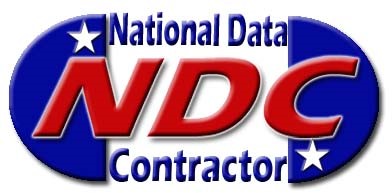OSP Long-Haul Fiber Contractor: A Closer Look at our Services, Equipment, and Industries Served
As an OSP long-haul fiber contractor, we play a crucial role in the installation and maintenance of fiber optic networks that span long distances. This industry trade is responsible for ensuring that data is transmitted efficiently and effectively across vast stretches of land, connecting businesses, communities, and individuals to the internet and other communication networks.
What is an OSP Long-Haul Fiber Contractor?
OSP stands for Outside Plant, referring to the physical infrastructure that supports telecommunications networks. A Long-haul fiber contractor is a professional who specializes in the installation, maintenance, and repair of fiber optic cables that span long distances. These cables typically run between cities, states, or even countries, forming the backbone of the global telecommunications network.
A Long-haul fiber contractor works on a wide range of projects, from laying new fiber optic cables to upgrading existing networks to meet growing demands for high-speed internet and other data services. We are essential in ensuring that data can be transmitted quickly and reliably over long distances, providing the connectivity that businesses, governments, and individuals rely on.
How is Long-Haul Fiber Installation Performed?
The process of installing long-haul fiber optic cables is a complex and precise operation that requires careful planning, coordination, and execution. Here is an overview of the steps involved in our typical long-haul fiber installation project:
-
Planning: The first step in any long-haul fiber installation project is to plan the route that the cables will take. This involves surveying the terrain, obtaining any necessary permits or approvals, and coordinating with other utilities or landowners whose property the cables will traverse.
-
Trenching: Once the route has been planned, the next step is to dig trenches along the route where the fiber optic cables will be buried. This can be a labor-intensive process, requiring specialized equipment such as trenching machines, microtrenching, and excavators.
-
Cable installation: After the trenches have been dug, the next step is to install the fiber optic cables. This is typically done by pulling the cables through the trenches using a combination of manual labor and mechanical equipment such as cable pulling machines.
-
Splicing: Once the cables have been installed, they must be spliced together to form a continuous connection. This involves carefully cutting and fusing the individual strands of fiber optic cable to ensure that data can pass through the network without interruption.
-
Testing: The final step in the installation process is to test the newly installed fiber optic network to ensure that it is functioning correctly. This involves using specialized testing equipment to measure signal strength, data transmission speeds, insertion and return loss, OTDR traces, and other key performance metrics.
Equipment Needed for Long-Haul Fiber Installation
Long-haul fiber installation projects require a wide range of specialized equipment to ensure that the cables are installed correctly and that the network functions efficiently. Some of the key equipment we use as an OSP long-haul fiber contractor includes:
-
Trenching machines: These machines are used to dig trenches along the route where the fiber optic cables will be buried. They come in a variety of sizes and configurations, depending on the terrain and the depth of the trenches required.
-
Cable pulling machines: These machines are used to pull the fiber optic cables through the trenches once they have been dug. They can be powered by hydraulic, electric, or manual means, depending on the size and weight of the cables being installed.
-
Fusion splicers: These devices are used to splice together the individual strands of fiber optic cable to create a continuous connection. They use heat to fuse the fibers together, ensuring that data can pass through the network without interruption.
-
OTDRs (Optical Time Domain Reflectometers): These devices are used to test the performance of fiber optic networks by sending pulses of light through the cables and measuring the amount of time it takes for the signal to return. This provides valuable information about signal strength, data transmission speeds, and other key performance metrics.
Industries Served: Long-Haul Fiber contractor
Our long-haul fiber contractor division serves a wide range of industries that rely on high-speed data transmission over long distances. Some of the key industries that benefit from the services we provide as an OSP long-haul fiber contractor include:
-
Telecommunications providers: Telecommunication companies rely on long-haul fiber networks to connect their customers to the internet, phone services, and other communication networks. NDC plays a crucial role in ensuring that these networks are installed and maintained to the highest standards.
-
Department of Transportation (DOT): The DOT often contracts with long-haul fiber contractors to install fiber optic cables along highways, roads, and other transportation corridors. This infrastructure is used for traffic management, road monitoring, and other transportation-related services.
-
Energy providers: Energy companies use long-haul fiber networks to monitor and control their infrastructure, such as power plants, substations, and transmission lines. Long-haul fiber contractors like NDC help ensure that these networks are installed and maintained to support reliable energy delivery.
-
Healthcare providers: Healthcare organizations rely on high-speed data networks to transmit medical records, images, and other critical information. We help ensure that these networks are in place to support the delivery of quality healthcare services.
